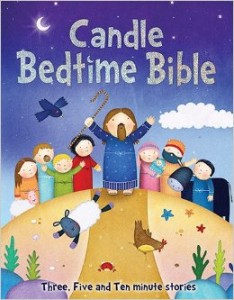The not-so-epic Evolution/Creation debate between Bill Nye the Science Guy and Ken Ham took place this past Tuesday, and I am still thinking about it. I admit, I am relieved I did not spread the word before hand for my family and friends to watch it, because it wasn’t a great day for demonstrating that Christian Creationists can be intelligent, science-based thinkers.
The original debate question was regarding whether or not Creationism is a viable model of origins in today’s modern scientific era. As I watched the debate live on Tuesday I was disappointed that Ken Ham centered his argument on theology (i.e. that Creationism is viable because the Bible says it is) more than on the evidence of the question at hand. As I watched parts of the debate again today I realized that while Bill Nye’s purpose was to prove the underlying ignorance of Creationism as per the question, Ken Ham was more interested in demonstrating (proselytizing?) the gospel message–assuming that the debate audience will (or at least should) consider the Bible first, and the evidence second. Ken Ham was successful, I think, at his aim (presenting his biblically based worldview); but I am disappointed he did not engage the atheist/agnostic/humanist portion of the audience by sticking to the tangible foundation of science that is common to both perspectives.
I happen to be a literal-day, young earth Creationist, but beyond this I believe that truth is an absolute, which can be discovered and observed to all who look for it regardless of whether or not the inquirer has a Bible on hand. In other words, science should have room for Creationism (really, Intelligent Design) without any reliance on the Bible, and I honestly believe it does. In fact, I personally became a Creationist first, and a follower in Jesus about five years later; so, for me, understanding the validity of Creationism as a viable alternative to Evolution helped me to believe the authenticity of Scripture, which later led to me recognizing God when I encountered Him.
I read once that Christians tend to teach their children answers to questions while Jews tend to teach how to ask good questions and debate. I do not know how representative this is, but I do know that the problem is not with holding a particular worldview (Creationism/Intelligent Design/Evolution, or Traditional Medicine/Alternative Healthcare/Folk Healthcare Practices, and so on), but in making faulty assumptions, and in failing to continually ask good questions (“Why are we seeing this?” “Why aren’t we seeing that?” “Do I have a solid basis for believing __?”).
Moreover, Bill Nye wants and expects for truth to always be reasonable. I would argue that it often is not. Some things do not make sense. The supernatural realm adds another layer of complication to “reasonable”–and I say this as a rational person who has experienced many things I cannot describe (like food multiplication miracles, instant healing miracles, prophecy, and some really wild things that sound too unbelievable to list).
But back to the question at hand… Let’s say hypothetically that Creationism (in any form) is incorrect. Could a mislead Creationist still viably add something to the scientific model in today’s world? I would argue that if the Creationist was a creative and thinking person, asking good questions, and attempting to predict the future based on observable patterns that absolutely that person could add something significant. The job of the defense (of a guilty person) is to keep the prosecution on their game. Any thinker knows that it is engaging those with a difference in perspective on life that refines and strengthens our own case, not the opposite. It is for this reason that I often play devil’s advocate within my own studies and theological research in attempt to find weaknesses in my own case–and often I have changed my entire perspective because I’ve found myself so convincing. 🙂
It seems a mistake to me that we would limit science (or theology, or health/medicine, etc.) to only familiar paradigms by calling all other (potentially obscure) perspectives nonviable. This is not critical thinking. Instead we should ask, “How can we teach young people to truly think critically? How do we teach them, not what to believe, but how to think and discover solutions?” A bit of creativity, a bit of non-sequential thinking is necessary to break out of the realm of what we know and into deeper places of observation and discovery.
Daniel learned all the knowledge of the Babylonians and also received the wisdom of God. I, likewise, plan to teach my kids how to truly think by providing them with the knowledge of the world, the wisdom of the historical church, and the ability to think, hypothesize, and observe in both the tangible realm of intellect, and the abstract and supernatural realms of the other worldly.
Let us encourage every brain to truly think.



 This is a great book, although I found it harder to read multiple stories of persecution than I had anticipated.
This is a great book, although I found it harder to read multiple stories of persecution than I had anticipated.

